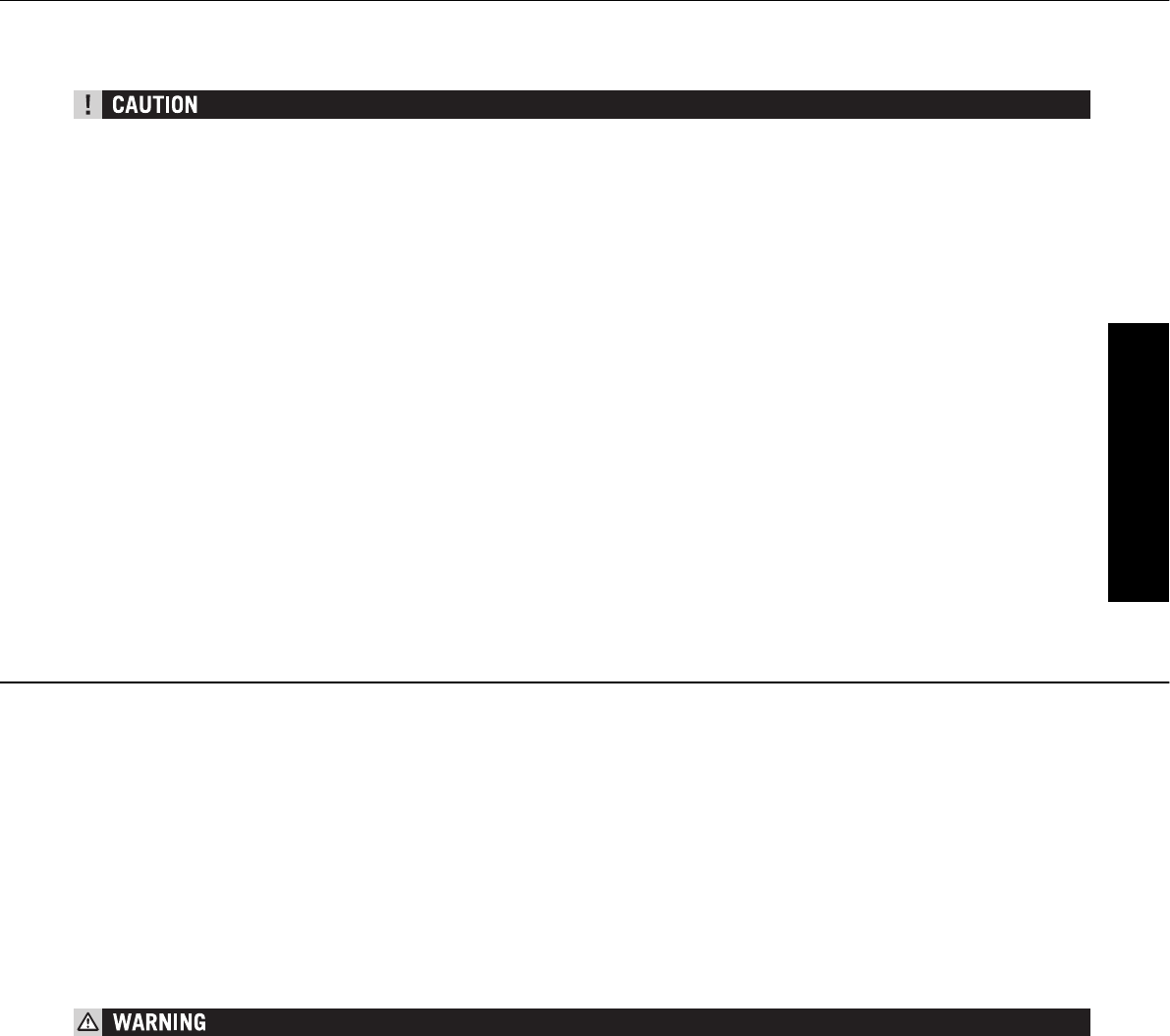
ENGLISH
33
CLEANING »
STORAGE »
Clean your motorcycle regularly in order to keep its painted finish looking shiny and new.
The best manner would be to use warm water that has been mixed with a commercially available washing detergent and a sponge. The
hard dirt can be removed before with the help of a soft water jet.
Never clean your motorcycle with a high-pressured cleaner or a high-pressured water jet. otherwise the water might run into the elec-
trical components, connectors, sheathed cables, bearings, carburetor etc. and cause mailfunctions, i.e., lead to the premature destruc-
tion of these parts.
– You should use commercially available detergents to clean the motorcycle. Heavily soiled parts should also be cleaned with the help
of a paint brush.
– Before cleaning with water, plug the exhaust pipe to prevent water ingress.
– After the motorcycle has been rinsed with a soft water jet, it should be dried by air pressure and a cloth. Then take a short drive
until the engine has reached its operating temperature, and also operate the brakes. The heat also causes the water at the inac
cessible parts of the engine and the brakes to evaporate.
– Slide back the protective covers on the handlebar-mounted instruments so that any water that may have seeped into this part of the
motorcycle is allowed to evaporate.
– After the motorcycle has cooled down, oil and grease all the gliding bearing parts. Also treat the chain with a chain spray.
– To prevent failures in the electric system, you should treat the short circuit button with a contact spray.
If you want to put your motorcycle away for longer periods of time, please observe the following instructions:
– Clean motorcycle thoroughly (see chapter: CLEANING)
– Change engine oil (old engine oil contains aggressive contaminations).
– Check antifreeze and amount of cooling liquid.
– Let the engine warm up again, close fuel tap and wait until the engine dies off by itself. In this way, the carburetor jets are
prevented from becoming resin-clogged by the old fuel.
– Remove spark plug and fill in approx. 5 ccm of engine oil into the cylinder through the opening. Actuate kickstarter 10 times in
order to distribute the oil onto the cylinder walls and mount the spark plug.
– Let fuel flow out of tank into an appropriate basin.
– Correct tire pressure.
– Lubricate bearing points of the control levers, footrests, etc. as well as the chain.
– The storage place should be dry and not be subjected to overly great temperature fluctuations.
– Cover the motorcycle with an air permeable tarpaulin or blanket. Do not use airtight materials, as possible humidity might not be
able to escape and thereby cause corrosion.
It would be very bad to let the engine run for a short time during the storage period. The engine would not get warmed up enough and
the thus developed steam would condense during the combustion process and cause the exhaust to rust.
Use after period of storage
– Fill up tank with fresh fuel.
– Check motorcycle as before each start (see driving instructions).
– Take a short, careful test ride first.
NOTE: Before you put your motorcycle away for the winter, you should check all parts for their function and wear. Should any
service jobs, repairs, or any refitting be necessary, you should have them carried out during the off-season (lower workload at
mechanics' shops). This way, you can avoid the long waiting times at your shop at the beginning of the next biking season.


















